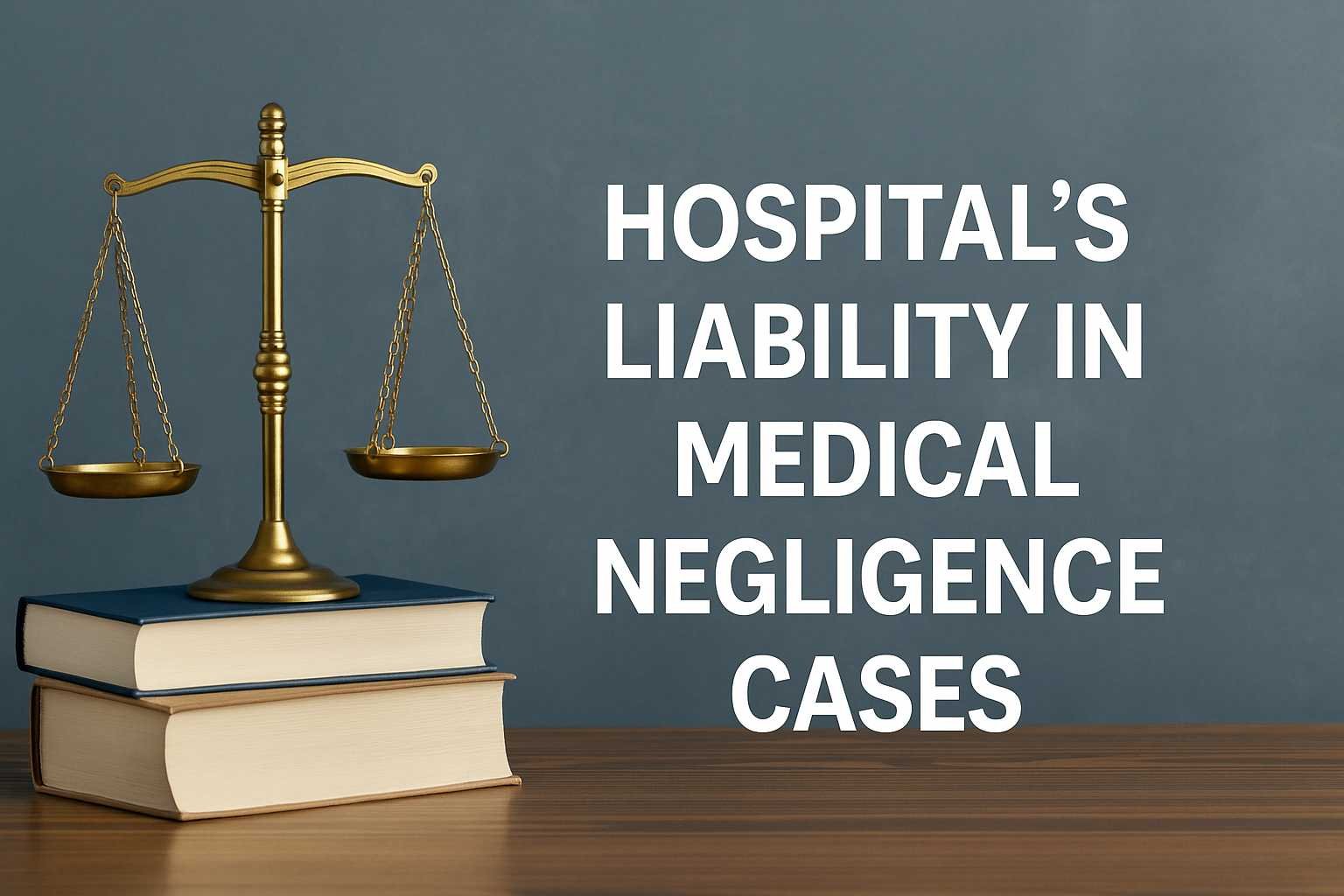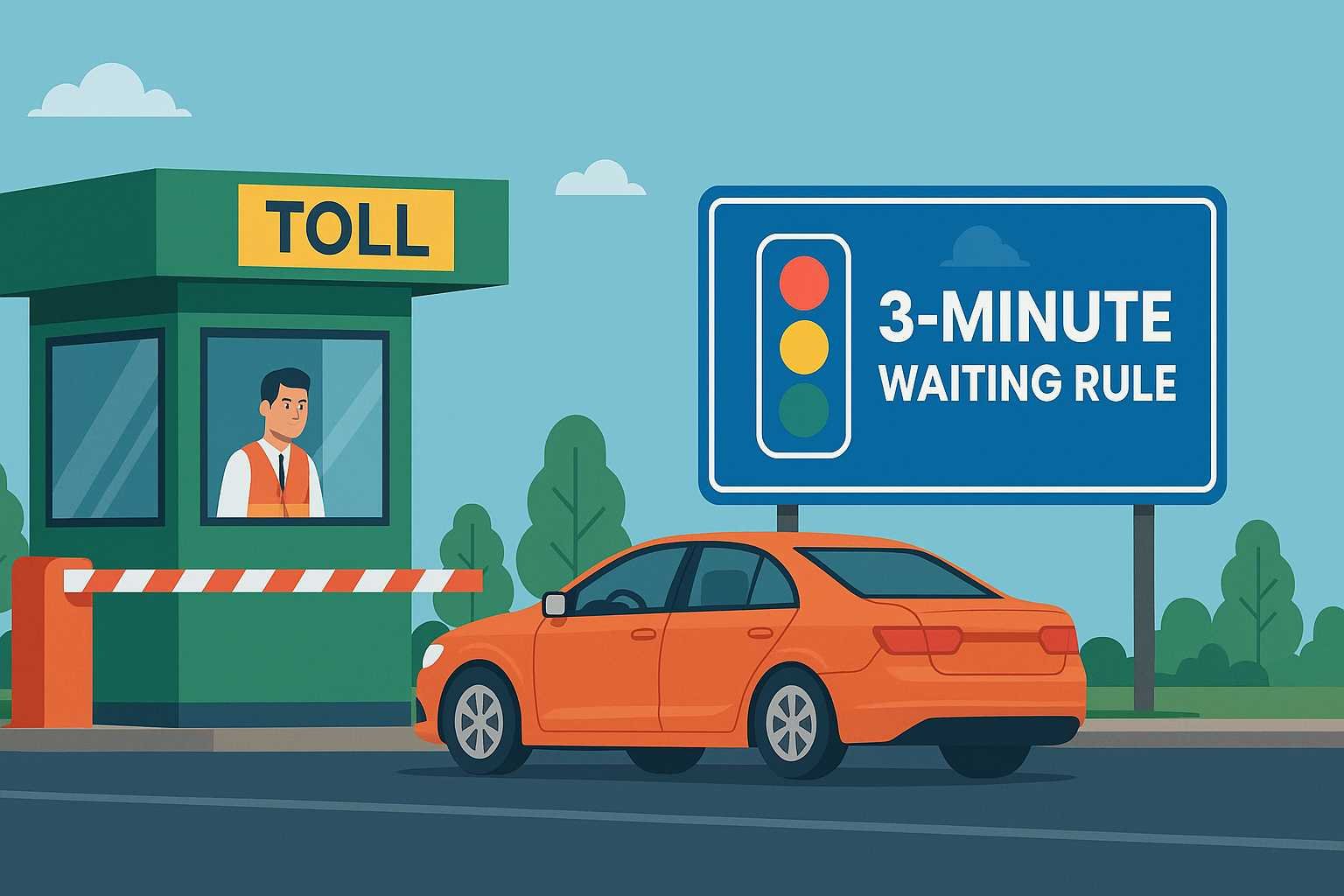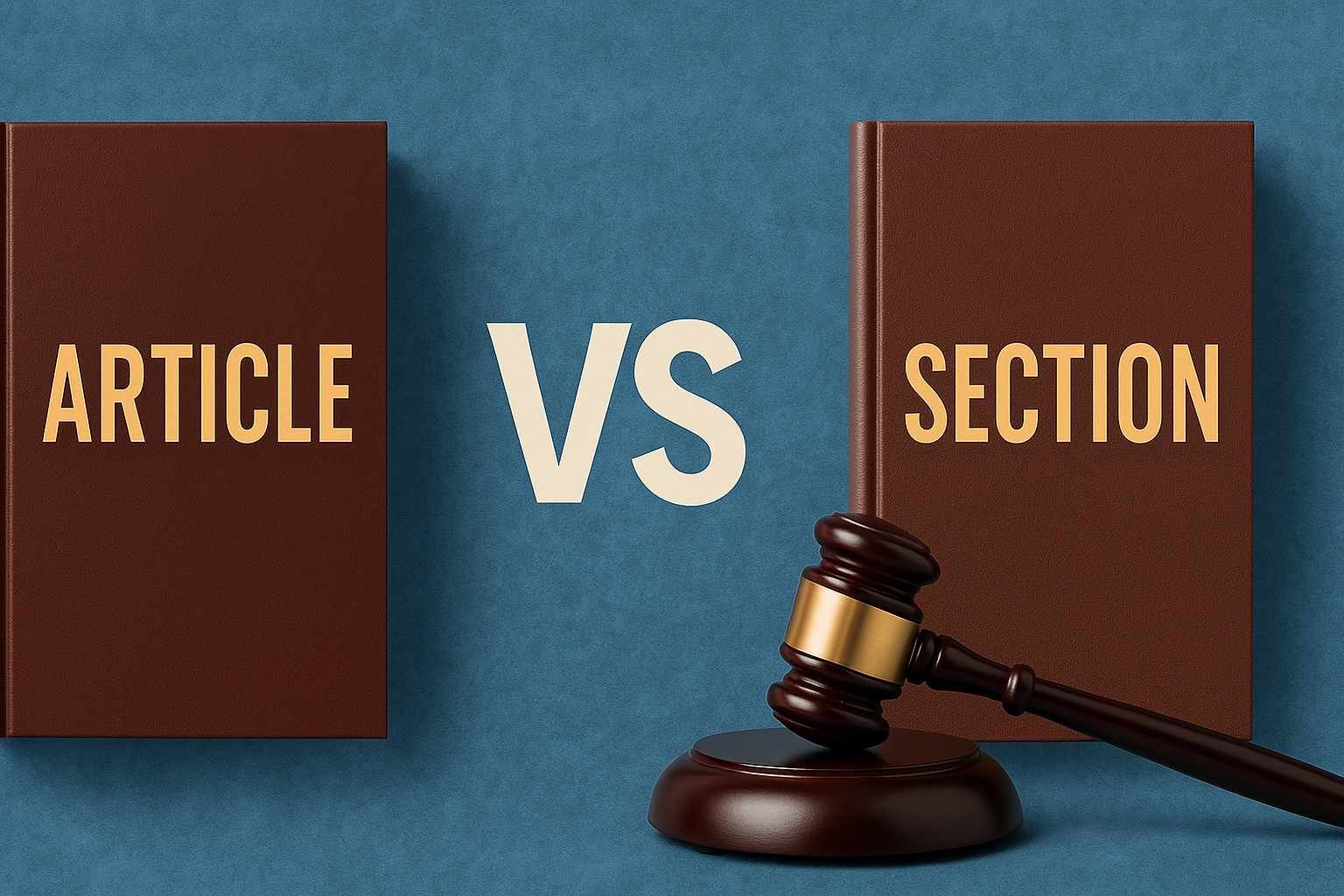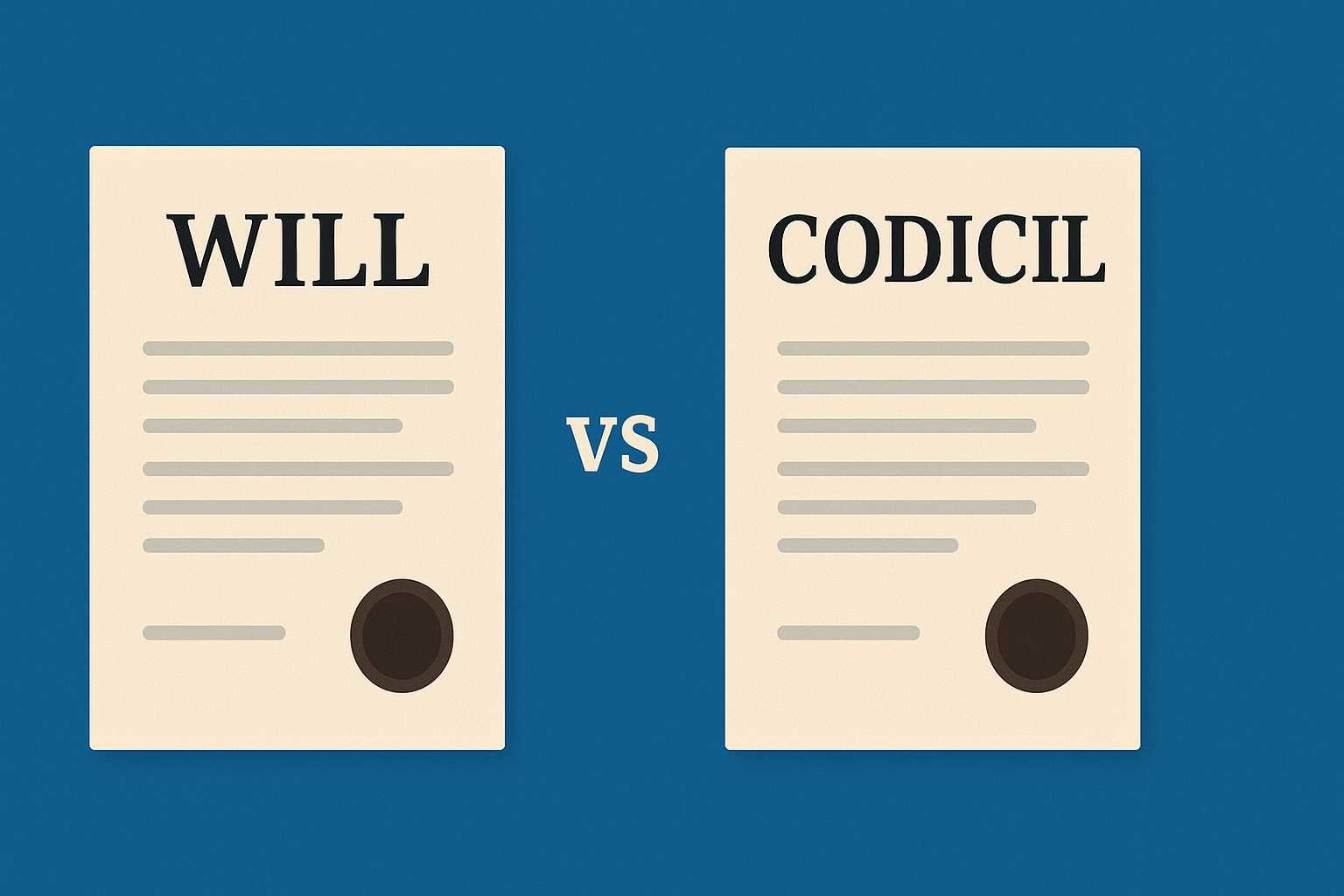On this page you will read detailed information about Hospital’s Liability in Medical Negligence Cases in India.
Healthcare is one of the most essential services in society — it carries not only moral but also legal responsibility. Patients place their lives and trust in the hands of hospitals and medical professionals. However, when that trust is breached due to negligence or lack of reasonable care, it gives rise to medical negligence claims.
In India, both doctors and hospitals can be held legally liable for such acts. This article explains, in simple terms, the legal principles, types of liability, landmark judgments, and compensation framework relating to hospital negligence in India.
1. Understanding Medical Negligence
Definition
Medical negligence refers to the failure of a medical professional or institution to provide reasonable care and skill, resulting in injury or harm to a patient.
The Supreme Court of India has consistently held that:
“Negligence is the breach of a duty caused by omission to do something which a reasonable man would do, or doing something which a prudent and reasonable man would not do.”
(Jacob Mathew v. State of Punjab, (2005) 6 SCC 1)
In the healthcare context, negligence arises when the treatment provided falls below the accepted standard of medical care.
Key Elements to Prove Medical Negligence
To establish a case of negligence against a hospital, the complainant must prove:
- Duty of Care: The hospital owed a legal duty to the patient.
- Breach of Duty: There was a failure to exercise the expected degree of care.
- Causation: The breach directly caused harm or injury to the patient.
- Damages: The patient suffered actual loss (physical, emotional, or financial).
2. Legal Framework Governing Medical Negligence in India
In India, hospitals may face civil, criminal, and consumer liability under multiple laws:
- Consumer Protection Act, 2019 (CPA):
- Medical services are considered “services” under the CPA, as held in Indian Medical Association v. V.P. Shantha (1995) 6 SCC 651.
- Patients can file complaints for deficiency in service before consumer commissions.
- Law of Torts (Common Law):
- Hospitals can be sued for damages in civil court for breach of duty of care.
- Indian Penal Code (IPC), 1860:
- Section 304A: Punishes causing death by negligence (up to 2 years imprisonment).
- Sections 336–338: Punish acts endangering human life.
- Indian Contract Act, 1872:
- When patients are admitted, a contractual relationship arises. Failure to provide reasonable care may lead to breach of contract.
- Clinical Establishments (Registration and Regulation) Act, 2010:
- Mandates all hospitals and clinics to maintain minimum standards of facilities and care.
- National Medical Commission Act, 2019:
- Regulates medical education and professional conduct of doctors. Hospitals employing negligent practitioners may face disciplinary actions.
3. Types of Hospital Liability in Medical Negligence Cases
Hospitals can be held liable in multiple capacities, depending on the circumstances of the case.
(a) Direct Liability (Institutional Negligence)
Hospitals owe a direct duty of care to patients, which includes:
- Maintaining clean and safe premises.
- Providing adequate medical equipment and infrastructure.
- Employing qualified staff and specialists.
- Ensuring emergency response and post-operative care.
If a hospital fails to fulfill these obligations, it can be held directly liable.
Example:
In Achutrao Haribhau Khodwa v. State of Maharashtra (1996) 2 SCC 634, the Supreme Court held the hospital liable when a surgical mop was left inside a patient’s body — a clear case of institutional negligence.
(b) Vicarious Liability
Under this principle, a hospital is held vicariously liable for the negligent acts of its employees — including doctors, nurses, technicians, or paramedics — performed in the course of employment.
Key Principle:
“The employer is responsible for the acts of its employees done within the scope of employment.”
If a hospital-employed doctor makes a mistake during surgery or misdiagnoses a condition, the hospital can be sued along with or instead of the doctor.
Example:
In Savita Garg v. Director, National Heart Institute (2004) 8 SCC 56, the Supreme Court ruled that once a patient suffers harm under hospital care, the burden of proof shifts to the hospital to prove it was not negligent.
(c) Liability for Non-Employee Doctors
Hospitals sometimes engage visiting consultants or independent practitioners. Even in such cases, courts have held hospitals liable if:
- The hospital represented the doctor as part of its staff, and
- The patient relied on the hospital’s representation.
This is called “ostensible or apparent authority.”
Example:
In Dr. Laxman Balkrishna Joshi v. Dr. Trimbak Bapu Godbole (1969) 1 SCR 206, the court emphasized that once a patient is admitted, they depend on the hospital and not on individual doctors — hence, the institution bears responsibility.
(d) Criminal Liability
Hospitals may also face criminal liability under the IPC if gross negligence results in a patient’s death. However, the threshold is high — it must be gross or reckless negligence, not merely an error of judgment.
Example:
In Jacob Mathew v. State of Punjab (2005), the Supreme Court clarified that criminal liability arises only when the negligence is so grave that it can be considered a “crime against the patient.”
4. Common Types of Hospital Negligence
- Wrong Diagnosis or Treatment
- Incorrect interpretation of reports or failure to diagnose critical conditions.
- Surgical Negligence
- Leaving surgical instruments or sponges inside the body, wrong-site surgery, etc.
- Medication Errors
- Administering wrong drugs or incorrect dosages.
- Delayed Treatment or Mismanagement
- Failure to attend emergencies promptly.
- Inadequate Supervision or Staffing
- Shortage of trained nurses or unqualified technicians performing procedures.
- Lack of Informed Consent
- Performing surgery or treatment without explaining risks and alternatives.
- Hospital-Acquired Infections (HAIs)
- Poor hygiene or sterilization leading to infections.
- Negligent Record Keeping
- Missing or altered patient records used to cover mistakes.
5. Burden of Proof and Evidence
The burden of proof generally lies with the patient or complainant. However, in hospital negligence cases, once basic evidence of injury or carelessness is shown, the burden shifts to the hospital to disprove negligence.
Evidence may include:
- Medical records and case sheets.
- CCTV or operation room footage.
- Expert opinions and medical board reports.
- Testimonies from witnesses or attendants.
Courts often rely on expert committees, especially in complex or specialized cases, to determine whether the standard of care was breached.
In the previous post, we had shared information about 3-Minute Waiting Rule at Toll Plazas on National Highways, so read that post also.
6. Compensation and Damages
Under the Consumer Protection Act, 2019, patients can claim compensation for deficiency in service, including:
- Medical expenses.
- Loss of income.
- Pain and suffering.
- Permanent disability or loss of life.
Notable Case:
In Dr. Balram Prasad v. Kunal Saha (2014) 1 SCC 384, the Supreme Court awarded ₹6.08 crore (the highest compensation in a medical negligence case in India) to the victim’s family for the death of a patient due to hospital negligence — holding both the hospital and doctors liable.
The case set a precedent for monetary accountability in healthcare.
7. Preventive Measures for Hospitals
To minimize liability, hospitals should:
- Maintain written protocols for treatment and infection control.
- Ensure qualified staff and continuous training.
- Obtain informed consent before every procedure.
- Maintain electronic medical records (EMRs) accurately.
- Conduct regular audits of medical practices.
- Carry professional indemnity insurance for doctors and hospitals.
- Establish patient grievance redressal cells.
These measures not only protect hospitals legally but also enhance patient trust and service quality.
8. Role of Digitalization and Legal Reforms (2023–2025 Updates)
Recent years have seen major developments in healthcare governance:
- Digital Health Mission (NDHM): Standardized digital health records for accountability.
- Telemedicine Guidelines, 2023: Regulates remote consultations — negligence during virtual care is also actionable.
- Clinical Accountability Reforms: Proposed under National Medical Commission to set minimum care standards for hospitals.
- Artificial Intelligence in Healthcare Monitoring: AI-driven audits detect anomalies in patient care and billing practices.
These reforms strengthen transparency and ensure that hospitals maintain ethical and professional standards.
Conclusion
Hospitals in India hold a dual responsibility — to provide safe healthcare and to uphold public trust. When they fail in this duty through negligence or carelessness, they can be held civilly, criminally, and vicariously liable under Indian law.
The law, however, strikes a balance — it protects doctors and hospitals from unfair prosecution while ensuring justice for victims of genuine negligence.
In today’s evolving medical landscape, hospitals must prioritize patient safety, record accuracy, and ethical conduct to avoid legal exposure. Ultimately, accountability is not just about compliance — it’s about ensuring that the pursuit of healing never compromises the duty of care.
Disclaimer
The information and services on this website are not intended to and shall not be used as legal advice. You should consult a Legal Professional for any legal or solicited advice. While we have good faith and our own independent research to every information listed on the website and do our best to ensure that the data provided is accurate. However, we do not guarantee the information provided is accurate and make no representation or warranty of any kind, express or implied, regarding the accuracy, adequacy, validity, reliability, availability, or completeness of any information on the Site. UNDER NO CIRCUMSTANCES SHALL WE HAVE ANY LIABILITY TO YOU FOR ANY LOSS OR DAMAGE OF ANY KIND INCURRED AS A RESULT OR RELIANCE ON ANY INFORMATION PROVIDED ON THE SITE. YOUR USE OF THE SITE AND YOUR RELIANCE ON ANY INFORMATION ON THE SITE IS SOLELY AT YOUR OWN RISK. Comments on this website are the sole responsibility of their writers so the accuracy, completeness, veracity, honesty, factuality and politeness of comments are not guaranteed.
So friends, today we talked about Hospital’s Liability in Medical Negligence Cases in India, hope you liked our post.
If you liked the information about Hospital’s Liability in Medical Negligence Cases in India, then definitely share this article with your friends.
Knowing about laws can make you feel super smart ! If you find value in the content you may consider joining our not for profit Legal Community ! You can ask unlimited questions on WhatsApp and get answers. You can DM or send your name & number to 8208309918 on WhatsApp






